Bridges over the Millennia
Monday, 26th October 2009 by Cédric
New writer: Cédric Cédric lives in Germany where he works for the science and education department of one of Germany's regional public radio and TV stations. He has a life-long project to see the world, especially by train.
The invention of the road was probably rather quickly followed by the idea of the bridge, simply because wet feet are pretty annoying when travelling. And so, over the course of thousands of years, many, many bridges were built. The beginnings were humble, and none of the very early wooden constructions survive.
However, with the invention of the arch over three thousand years ago, things got moving (and spanning). At first, arches were crude, but nevertheless the results proved to be solid; the three Arkadiko Bridges, built by Mycenaean Greeks at the end of the Bronze Age in around 1200 BC, are still with us - and one is even still in usable shape today.
In even better shape are the Tarr Steps, a "clapper bridge" in southern England, which was probably built around 1000 BC. The Tarr Steps are made of raw stone slabs weighing several tons apiece; some of which have occasionally been carried up to 50 m downstream during floods, but they've always been placed back on their piers afterwards.
With the rise and expansion of the Roman Empire came architects and engineers, who had more modern building materials such as cement and concrete at their disposal. The Romans built smoothly paved roads, palaces, temples and thermal baths1 all over the Empire, as well as the first truly large-scale bridges for roads and water. Many of these Roman viaducts and aqueducts are still in amazingly good shape today.
One of the most famous Roman aqueducts is the two thousand year old Pont du Gard, a three level, 50 metre (165 ft) high structure that forms part of a water conduit over 40km (25 miles) long which carried water to the Roman town of Nemausus, today's Nîmes.
About the same age is the Pont Saint-Martin, spanning the river Lys with an arch of over 30m (100 ft) - one of the widest arches of the time2. Amazingly it's still in day-to-day use.
After the Romans had left (or were kicked out of) most of Europe by around AD 600, large-scale bridge building hit a bit of a recession. Big bridges for big roads were no longer needed to facilitate the Empire's infantry deployments, and the big workforces (i.e., lots of slaves) weren't that readily available any more.
Wet feet were still widely out of fashion though, and as traffic increased, the local Europeans eventually built their own big bridges. Nearly 900 years old is Avignon's Pont Saint-Bénezet, better known as the Pont d'Avignon.
Over the course of 500 years, the Pont d'Avignon repeatedly collapsed due to heavy floods and shoddy repairs, and it was eventually abandoned in 1668. Today, less than a fifth of its original length remains.
In some other places, wet feet were so unpopular that bridge builders just kept on building. The 800-year-old Swarkestone Bridge in England's Midlands not only crosses the Trent, but also adjacent swamp lands.
At over a kilometre long, the Swarkestone Bridge is England's longest stone bridge, and in daily use by hundreds of drivers. However, its builders never imagined their work to be so heavily used; after nearly eight centuries of stability, the Swarkestone Bridge and Causeway is in dire need of repairs.
With constant population growth, traffic increased everywhere. Local traffic in the emerging metropolises proved to be especially annoying. In Paris, this lead to Henry III (the French one) ordering the construction of a new bridge across the Seine river in 1578. Finished in 1607, it became the Pont Neuf, or "New Bridge".
Ironically, the Pont Neuf is now Paris' oldest surviving bridge, and it's surviving very well. Open to normal road traffic in the heart of Paris, the then nearly 400-year-old construction had to bear a load of 10,000 cars a day until the introduction of new traffic routes in 2004. It's much quieter today, but still crossed by hundreds of drivers every day.
Bridges have always been more than a mere Thing To Cross Things. A big bridge was also a display of power and technological prowess. Bridges not only had to be useful, but also had to intimidate enemies and impress friends. Many bridges in big cities are much more elaborately built than would be dictated by mere necessity, be it the impressive Tower Bridge3 in London, or Rialto Bridge in Venice.
A new bridge's look is still of great importance nowadays, despite a certain lack of enemies in need of intimidation. They please locals, appeal to tourists and serve as interesting landmarks. New bridges are often built according to beautiful and unique designs despite almost always being more expensive than is strictly required.
Modern building materials and techniques allow for much greater freedom in forms and shapes, with often stunning results. Over the last decades, some truly beautiful, big, delicate, or simply weird bridges have been built, such as the Gateshead Millennium Bridge which implements a novel lift bridge concept, or the previously featured Wasserstraßenkreuz Magdeburg, which allows a shipping canal to cross a river.
Today, bridges routinely span more than a kilometre without touching ground. They brave storms and earthquakes, relying not on divine protection but on engineers' ingenuity. However, modern industrial materials, despite their incredible properties, have a significantly lower life expectancy than bare rock. A thousand years from now, there probably won't be too many bridges left of those built over the last few decades - while some roman or mediaeval constructions have a fair chance of still being around to amaze and impress our descendants.
We adore bridges here at Google Sightseeing, and to prove it, our Bridges category features nearly 100 of the world's most fascinating bridges.
-
Using state-of-the-art under-floor and in-wall heating over 2,000 years ago. ↩︎
-
It has a ratio of rise to span of 3.3 (i.e., for every metre of height, it spans 3.3 metres), which is sensational for the time. ↩︎
-
The name is derived from the bridge's location close to the Tower of London, not from its towers. ↩︎
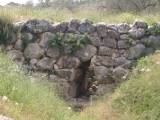
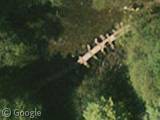
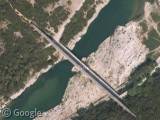
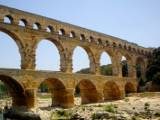
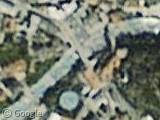
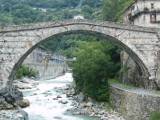
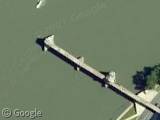
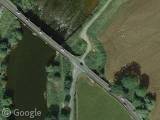
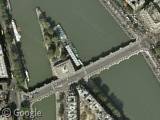

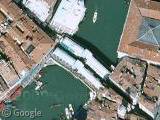

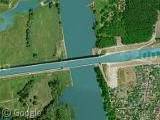
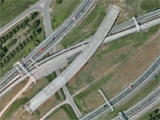
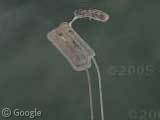
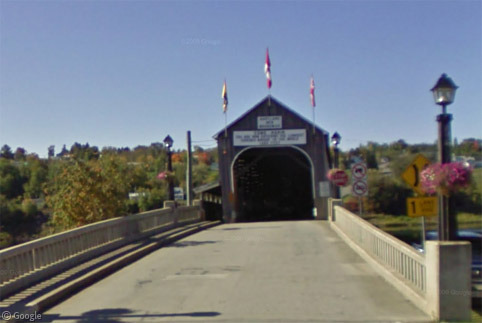
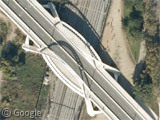
Great write up.
All this talk about bridges and no mention of the latest and greatest? Millau is an impressive sight. Whether it will still be standing in 3200 years is another matter.
That’s intentional. Everyone knows about the Viaduc de Millau after all 😉
Designed service life for this bridge is 120 years by the way.
Very annoyingly, Google have never yet released imagery that shows the Millau Viaduct having been completed. Back in 2007 we published a story on it anyway:
https://www.googlesightseeing.com/2007/03/29/the-millau-viaduct-under-construction/
But we’d love to write a proper story – if only we could see it! (That’s a hint Mr. Google)
Amazing post. Bridge-tastic Welcome Cedric.
To say that the Tarr Steps were PROBABLY built around 1000 BC is a bit misleading. SOME people (maybe interested in making them interesting for tourists?) make these claims … but generally more evidence seems to point towards construction in the middle ages. Other than that a nice post 😉
Please note that most Roman engineering projects was carried out by the Legions and not slaves. The Roman soldiers took a great pride in their engineering-skills.